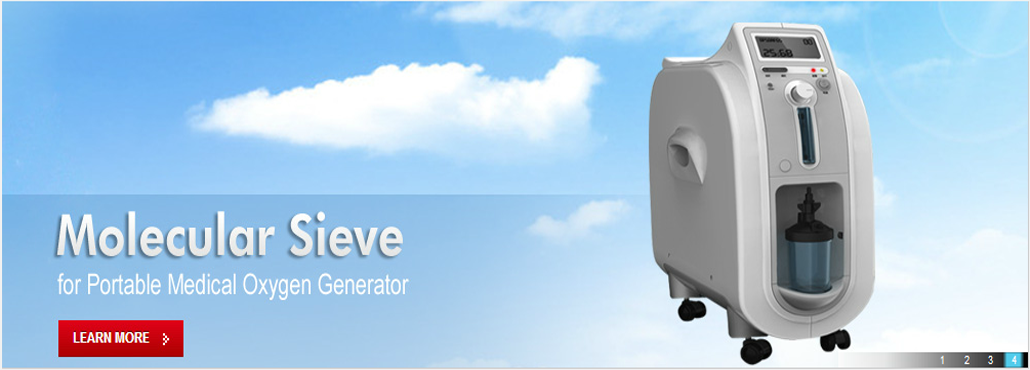5A molecular sieve is a calcium aluminosilicate. Uniform pore size of about 5 × 10-7mm, a bulk density of 700 ~ 800kg / m3, a specific surface area of 750 ~ 800m2 / g, a porosity of 47%, the mechanical strength of greater than 95%, the water absorption capacity of about 21.5% of carbon dioxide adsorption capacity of 1.5%, while the adsorption of water, carbon dioxide, acetylene and other hydrocarbons have a total adsorption. 13X molecular sieve is a sodium aluminosilicate, uniform pore size of about 10 × 10-7mm, a bulk density of 600 ~ 700kg / m3, a specific surface area 8001000m2 / g, a porosity of 50%, the mechanical strength of greater than 90%, of moisture adsorption capacity of about 28.5%, carbon dioxide adsorption capacity of 2.5%, while the adsorption of water, carbon dioxide, acetylene and other hydrocarbons also having a total adsorption. Compared two adsorbents, adsorption performance is better than 5A zeolite 13X molecular sieve. However, zeolite 13X somewhat less mechanical strength and abrasion resistance, and the manufacturing process is more complicated, and therefore higher prices.
zeolite adsorbent zeolite is a silicate mineral water containing aluminum frame structure
2015年9月29日星期二
2015年9月26日星期六
Application of Zeolite 13X
13X molecular sieve pore size 10A, 10A adsorption greater than 3.64A less than any molecule, can be used to co-catalyst carrier,co-adsorption of water and carbon dioxide, water and hydrogen sulfide gas co-adsorption, mainly used in medicine and compressed air drying systems, depending on the there are different varieties of specialty applications. It can be an air separation plant in gas purification, removal of water and carbon dioxide, liquid hydrocarbons, liquefied petroleum gas, natural gas drying and desulphurization.
2015年9月23日星期三
Molecular sieve desiccant
Molecular sieve desiccant, which is a synthetic and water molecules have a strong adsorptive desiccant molecular sieve products, crystalline aluminosilicate compound, which has a regular crystal structure and uniform pore pore size of the molecular order of magnitude,it only allows a diameter smaller than the pore molecules into, and therefore a mixture of molecules can be screened by size, so called molecular sieves. Which pore size can be controlled by different process, in addition to adsorb moisture, it can adsorb other gases. At temperatures above 230 ℃, the water molecules can still accommodate good.
2015年9月20日星期日
Molecular sieve regeneration temperature
ASU conventional 13X molecular sieves general use above 700 degrees will produce degeneration, but his regeneration temperature of 140 degrees can be, that is, blowing cold temperature can reach this peak, but we do ASU around 180 degrees heating gas for heating to him, in order to ensure the peak cold blow to ensure complete regeneration. The temperature there is sufficient, at higher is a waste of energy. At the end of the cold blowing temperature should be at room temperature, below 30 degrees, or molecular sieve adsorption capacity is not restored to the best. Because the lower temperature molecular sieve adsorption capacity of the stronger. Whether complete regeneration of molecular sieves flag is blowing cold blowing cold peak, cold blowing peaking at 140 degrees can be considered very thoroughly heated, the next is to ensure that the outlet temperature of the cold end of the blow.
订阅:
博文 (Atom)




